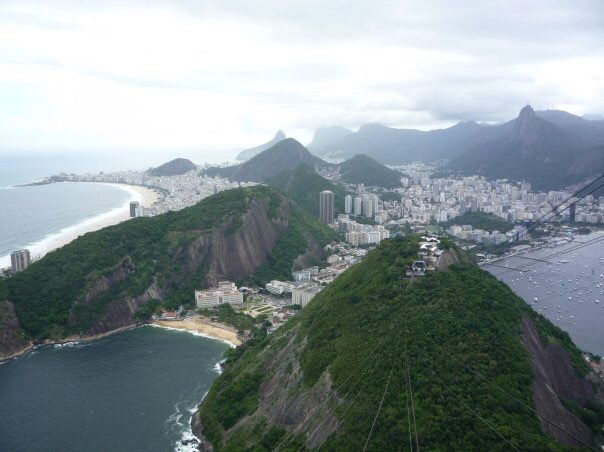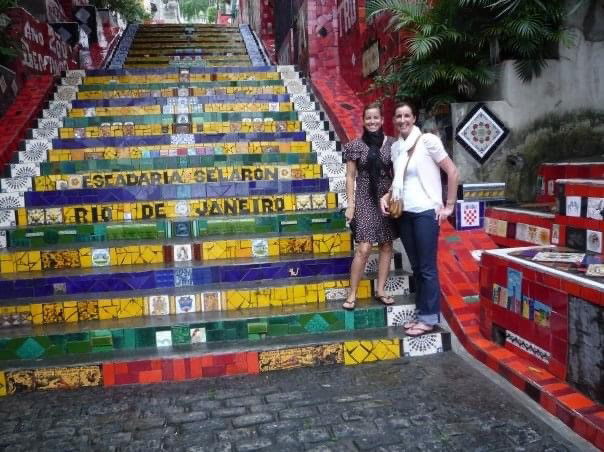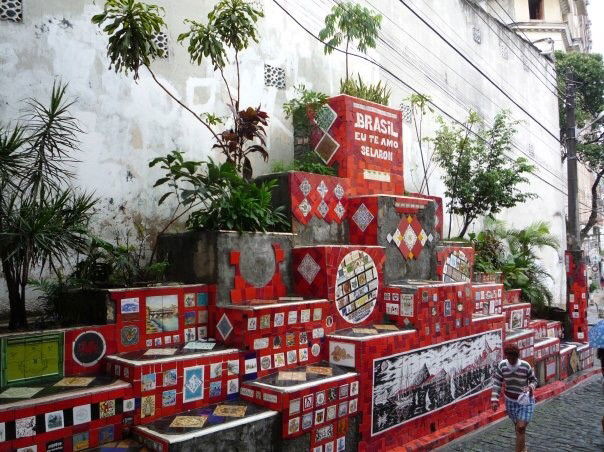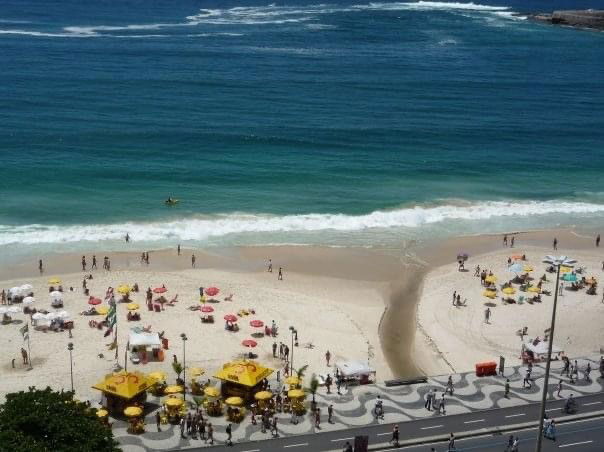A Trip to Rio de Janeiro
Back in 2008, when I was cabin crew, myself and a friend were deciding where to go on our next holiday, we are both massive Michael Bublé fans and it just so happened that he was in concert in Rio De Janeiro! That sealed the deal for us, so we booked our tickets and planned our trip.
I immediately fell in love with the Rio, the whole vibe & way of life.
Whatever pre-conceptions you have about this Brazilian city, put them to one side and go and see it for yourself. Rio is a city that has it all, beaches, history, mountains. Rio isn’t known for being a safe city but we definitely didn’t feel unsafe at any time. Like anywhere in the world that you travel to, use common sense, don’t walk alone at night, stick to populated areas, don’t wear flashy jewellery or carry flashy items with you.

When To Visit
Brazil is the perfect destination to visit all year round, due to its proximity to the equator. We visited Rio De Janeiro in November which is the end of spring, the weather was hot enough to lie on the beach, but we were unfortunate and did get some rain!
If you are wanting to visit for carnival it is usually held in February but the city does get extremely busy.
Rio De Janeiro lifestyle is definitely built around being outside, but there is still plenty to do on the cold and rainy days too. We spent five days in Rio, which is a perfect amount of time to really get to know the city and all that it has to offer.
Getting Around Metro / Public Transport Rio De Janeiro is a massive city and even sticking to the tourist parts, you will definitely need to use some public transport to get around. Whilst some areas are walkable, it’s not always safe to do so and you may spend more of your time getting between spots then really seeing it. The Metro system is incredibly reliable, cheap and safe. Although it doesn’t cover every part of the city, where you can use it, I would definitely recommend doing so. Where the Metro doesn’t reach, there is an extensive bus system and overground trams to use.
Uber’s If you want to get somewhere faster than with public transport, or if it’s late at night and you want to be safe, Uber works better here than I’ve ever seen before. In shopping malls, the airport or any major tourist attractions there are Uber lounges to wait in whilst you call your ride and it’s cheap.
Scooters (Lime / Yellow) Rio de Janeiro has two major electric scooter companies, lime and yellow. They are the perfect hop on, hop off option to get between spots, especially if you’re on the beach or in cycle lanes. Even more fun, Lime is integrated into Google maps and will let you know how much faster than walking it is to rent one.
What To Do in Rio De Janeiro Now you know the best time to visit Rio (any time, all the time!) and how to get around, I should let you know what to do in Rio.
Christ The Redeemer
- Cost: Varies based on transport
- Time spent: 1 hour max at top, hike required 2+ hours each way.
- Best for: First time visitors to Rio
No list of what to do in Rio De Janeiro would be complete without mentioning the iconic Christ the Redeemer (Cristo Redentor). This towering statue of Christ sits on top of Corcovado Mountain protecting the entire city and it blew me away. There are a number of ways to visit Christ the Redeemer: Hike to the top via one of the trails beginning in Tijuca National Park. Ride the Cog Train departing from Cosme Velho. Catch a mini van shuttle to the top from Largo Do Machado or Copacabana. This iconic site of the city is an absolute must, and offers panoramic views of the entire Rio de Janeiro coast line.


Sugar Loaf Mountain
- Cost:
- Time spent: 1 hour
- Best for: Views over Rio
Another iconic site of Rio de Janeiro and an absolute must to do for any visit to Rio. If you haven’t seen Rio De Janeiro’s skyline, then a trip up Sugar loaf Mountain on the cable car should be top of your list of what to do in Rio.
Due to its popularity, queues can get incredibly long (especially in high season), so it’s worth the early alarm to enjoy quieter views and less waiting time.
You can also see it by helicopter ride.
Check weather forecasts and online cameras for visibility ahead of time.

Jardim Botanico
- Cost: R$20
- Time spent: 2-3 Hours
- Best for: Seeking peace and quiet
Right in the centre of Rio lies gigantic botanical gardens. We had hours of fun strolling along the paths among palm trees, exploring the Japanese gardens and the various greenhouses dotted around the park. Not to mention observing the local residents (monkeys) playing over our heads.
The Botanical Gardens in Rio are a magical escape from the noise of the city and beaches. Although there were a lot of other people there, it’s big enough that you still have plenty of space.
Hiking
- Cost: Free
- Time spent: 20 minutes or a full day!
- Best for: Fitness Fiends
Aside from Corcovado Mountain to see Christ the Redeemer, Rio de Janeiro offers countless other hikes to explore. See the city from a different perspective by trying out a few during your stay in Rio. A full list of hikes in Rio can be found here.
Escadaria Selarón - also known as the 'Selaron Steps'
- Cost: Free
- Time spent: As long as you want
The world-famous steps in Rio de Janeiro are the work of Chilean-born artist Jorge Selarón who claimed it as "my tribute to the Brazilian people".
Nestled between the bohemian neighbourhoods of Lapa and Santa Teresa the staircase is covered in more than 2,000 pieces of colourful tiles, mirrors and ceramics.


Copacabana & Ipanema Beach
- Cost: Free
- Time spent: As long as you want
- Best for: Sunny days
No list on what to do in Rio De Janeiro would be complete without mentioning it’s iconic beaches. The beach isn’t just a tourist hub in Rio, it the way of life.
Copacabana and Ipanema beaches are different in location, but similar in many ways. All the beaches along the Rio city are marked by “Posto” numbers. This is the life guard huts and a useful point for orientating yourself in the city.

The Favelas
Favelas are the slums or shantytowns located within or on the outskirts of the country's large cities, especially Rio de Janeiro and São Paulo.
There are over 1000 favelas in Rio. They range from newer or more challenged communities
Favelas are often portrayed as being hubs of violence, drugs and criminal activity, but today many of these favelas have been transformed into popular places to visit in Rio, so much so that they’ve had a huge influence in not only Brazilian culture, but its tourism industry as well.
Here are some options of different tours you can do:
- Rio full day with Selaron steps, Christ Redeemer & Sugar loaf mountain
- Two of Rio's Best: Christ the Redeemer & Sugarloaf Mountain Half-Day Tour
- Carnival Backstage Tour at Samba City with Cocktail (Carnaval Experience)